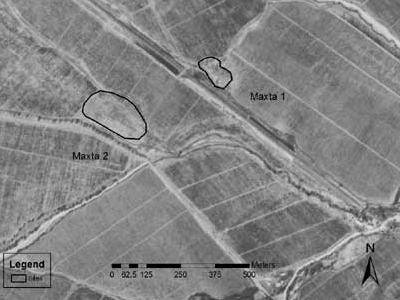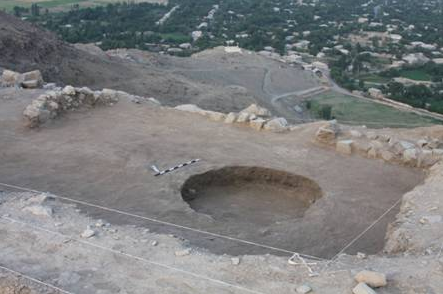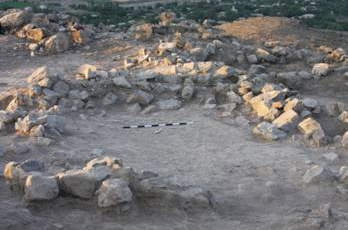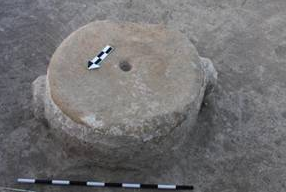Our first goal during the 2011 season, was the excavation of a small mound, 100m northwest of Oğlanqala (Figure 2). The mound has a diameter of 65 m and rises about two meters above the surrounding fields. During survey at this mound in 2008 and 2009, we found Xocalı-Gədəbəy sherds, similar to those known from elsewhere in Azerbaijan dating to the Early Iron Age, and one pillar figurine.1 As a result, we hypothesized that the small mound was probably a kurgan or burial mound. We were particularly interested in excavating this burial mound, because it dates to the initial (Oğlanqala V) construction of the fortress. Learning more about the people buried in this mound would help us learn who built Oğlanqala, and perhaps why this large construction project was undertaken. During excavation we found a stone circle with a diameter of 3 m, which resembled other grave markers found elsewhere in the Caucasus (Figure 3). Excavation of the circle and elsewhere in the mound produced more period V sherds and a bird figurine, a type well-known from other graves. Unfortunately, no skeleton was found in the excavation, which stopped at 2.5 meters below the surface, due to the high water table.




